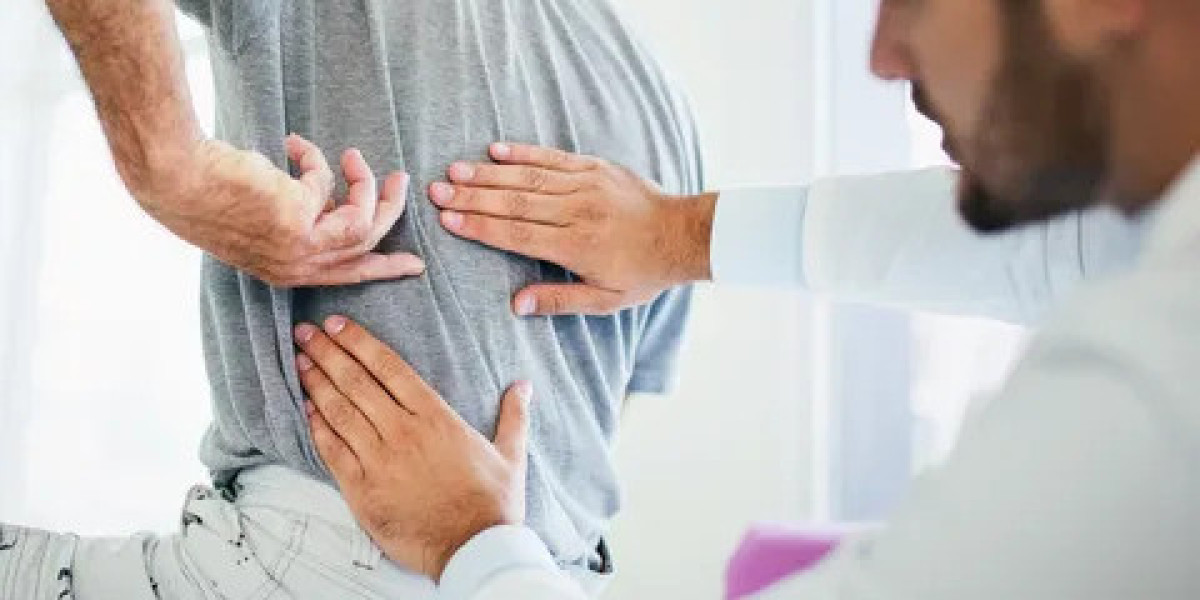Scoliosis is a condition characterized by an abnormal curvature of the spine, which can lead to discomfort, pain, and difficulty with movement. While scoliosis varies in severity and can develop at any age, it often becomes noticeable during growth spurts in adolescence. Managing pain associated with scoliosis involves a combination of treatments aimed at reducing discomfort, improving posture, and enhancing overall quality of life. This article explores practical methods for pain relief and management strategies tailored to individuals with scoliosis.
Understanding Scoliosis
Scoliosis causes the spine to curve sideways in an "S" or "C" shape rather than being straight. Common symptoms include:
Uneven Shoulders or Hips: One shoulder or hip may appear higher than the other.
Visible Spinal Curve: The spine may curve to the side when viewed from the back.
Back Pain: Pain or discomfort in the back, particularly in the lower back or mid-back.
Fatigue: Muscles may become fatigued from trying to compensate for the spinal curvature.
The causes of scoliosis can vary and may include congenital factors, neuromuscular conditions, or idiopathic origins (unknown cause). Treatment focuses on managing symptoms, preventing progression, and improving spinal function.
Non-Surgical Treatment Options
For individuals with mild to moderate scoliosis and manageable pain, non-surgical treatments are typically recommended:
Physical Therapy
Physical therapy plays a crucial role in managing scoliosis by improving flexibility, strengthening muscles, and promoting better posture. A physical therapist can design a personalized exercise program that includes:
Stretching Exercises: Stretching helps alleviate muscle tension and improve flexibility in the spine and surrounding muscles.
Strengthening Exercises: Targeted exercises strengthen the muscles that support the spine, reducing strain and pain.
Bracing
Bracing is often prescribed for adolescents with moderate scoliosis to prevent the curvature from worsening as the spine continues to grow. Braces are custom-made and worn for a specified number of hours each day, typically during growth spurts. They help maintain spinal alignment and alleviate discomfort.
Pain Relief Medication
Pain relief medication such as NSAIDs (nonsteroidal anti-inflammatory drugs) can help reduce pain and inflammation associated with scoliosis. These medications, including ibuprofen or naproxen, are available over-the-counter and can be used as directed to manage discomfort.
Lifestyle Adjustments
Making lifestyle modifications can complement medical treatments and improve overall spinal health for individuals with scoliosis:
Maintain a Healthy Weight
Excess weight places additional strain on the spine and can exacerbate pain associated with scoliosis. Maintain a healthy weight through balanced nutrition and regular physical activity to reduce stress on the spine.
Practice Good Posture
A conscious effort to maintain good posture can help alleviate pressure on the spine and reduce discomfort. Sit and stand with shoulders back, head aligned over the pelvis, and feet flat on the floor.
Stay Active
Engage in low-impact exercises such as walking, swimming, or cycling to strengthen muscles, improve flexibility, and support overall spinal health. Avoid high-impact activities that may strain the spine.
Ergonomic Adjustments
Ensure workspaces, chairs, and beds are ergonomically designed to provide adequate support for the spine. Use supportive pillows and cushions to maintain spinal alignment while sitting or sleeping.
Complementary Therapies
Specific complementary therapies may provide additional pain relief and support for individuals with scoliosis:
Massage Therapy
Massage therapy can help relax tense muscles, improve circulation, and reduce pain associated with scoliosis. A licensed massage therapist experienced in treating spinal conditions can provide targeted relief.
Acupuncture
Acupuncture involves the insertion of thin needles into specific points on the body to alleviate pain and promote healing. Some individuals find acupuncture beneficial for managing chronic pain associated with scoliosis.
Yoga and Pilates
Yoga and Pilates emphasize gentle stretching, strengthening exercises, and breathing techniques that can improve posture, flexibility, and core strength. Modified poses and movements can be tailored to accommodate spinal curvature.
Surgical Options
In cases of severe scoliosis or when non-surgical treatments fail to provide relief, surgical intervention may be necessary. Standard surgical procedures for scoliosis include:
Spinal Fusion
During spinal fusion surgery, the surgeon joins two or more vertebrae together using bone grafts and metal rods or screws. This procedure stabilizes the spine, reduces curvature, and alleviates pain.
Vertebral Body Tethering
Vertebral body tethering is a newer surgical technique that involves attaching a flexible cord to the curved side of the spine to straighten the curvature while preserving spinal flexibility gradually.
Surgical decisions are based on factors such as the severity of the curvature, the age of the patient, and overall health. It's essential to discuss surgical options thoroughly with a spine specialist to understand risks, benefits, and expected outcomes.
Coping Strategies and Support
Living with scoliosis can be challenging, but various coping strategies and support resources can help manage pain and improve quality of life:
Join Support Groups: Connecting with others who have scoliosis can provide emotional support, practical advice, and encouragement.
Counseling: Counseling or therapy can help individuals cope with the emotional impact of living with a chronic condition like scoliosis.
Educate Yourself: Learn about scoliosis, treatment options, and self-care strategies to empower yourself in managing your condition.
Conclusion
Managing pain associated with scoliosis involves a comprehensive approach that includes non-surgical treatments, pain relief medication, lifestyle adjustments, and, in some cases, surgical intervention. By combining these strategies, individuals with scoliosis can effectively alleviate discomfort, improve spinal function, and enhance overall quality of life. It's essential to work closely with healthcare providers to develop a personalized treatment plan that addresses individual needs and goals. With proper management and support, many individuals with scoliosis can achieve significant pain relief and maintain an active, fulfilling lifestyle.








